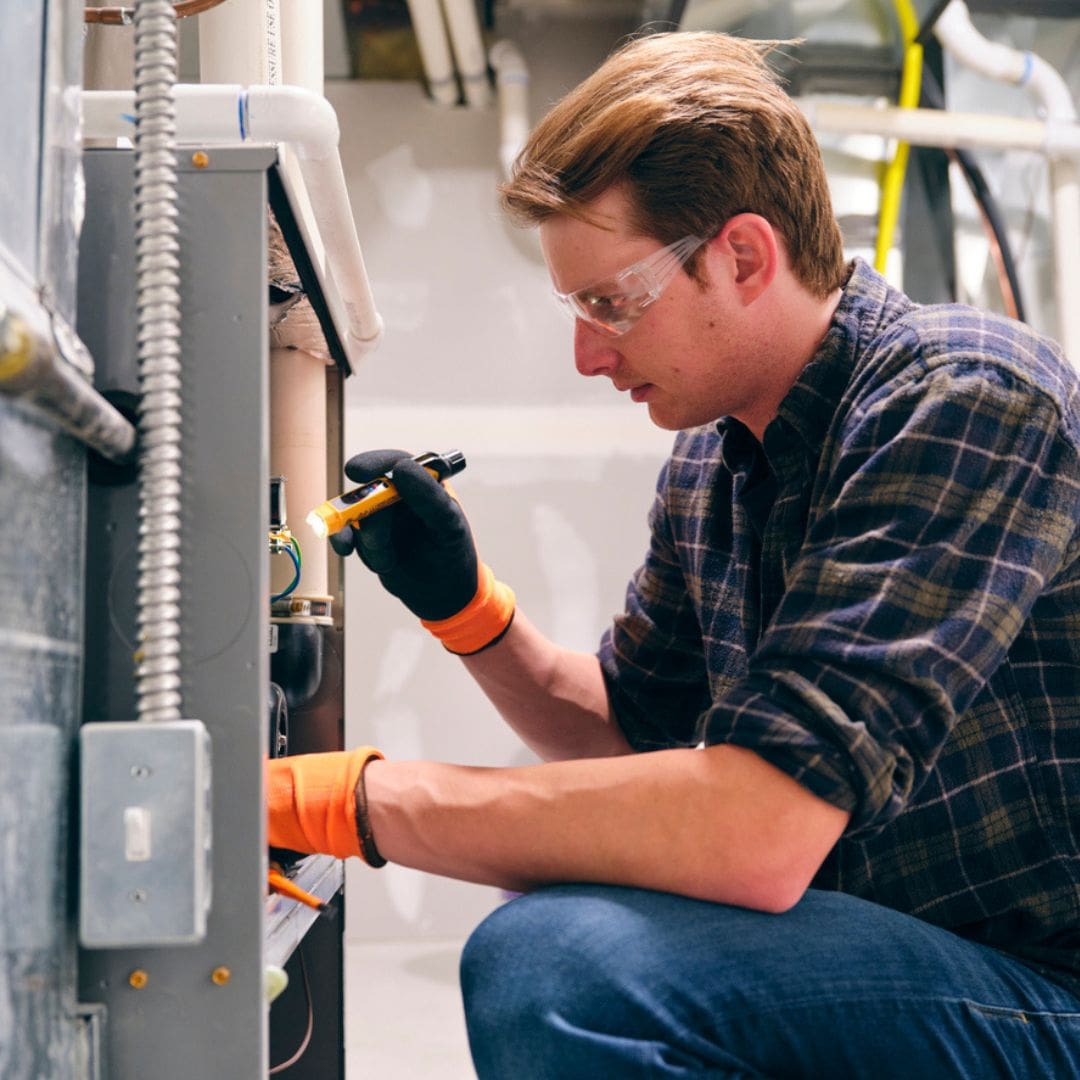Are your energy bills creeping up? Feeling stuck with an outdated HVAC system? A hybrid heating and cooling system could be the game-changer you’ve been waiting for. Heating and cooling systems have come a long way, but there’s always room for improvement. Now, hybrid systems are taking the industry by storm.
Unlike traditional HVAC setups that stick to one energy source, hybrid systems combine a heat pump with a gas furnace. The system switches between the two depending on what’s needed for the current temperature. What makes hybrid systems so intriguing is their ability to adjust dynamically. On milder days, the heat pump takes the lead by using only minimal energy. But when temperatures drop, the gas furnace kicks in to maintain comfort.
But are hybrid HVAC systems truly better?
Hybrid systems promise energy savings, sustainability, and a balance in comfort. The answer might depend on your climate, home, and your priorities. Read on to get expert insights from Clarke and Rush Mechanical to help you decide if hybrid HVAC systems are the right choice for you.
How Does a Hybrid Heating and Cooling System Work?
Core Components of a Hybrid HVAC System
A hybrid HVAC system brings together the strengths of two technologies. Each part of the system works together to adapt to changing temperatures to keep your home comfortable no matter what temperature it is outside. Here’s what makes up a typical hybrid system:
- Dual-Fuel Heat Pump
The dual-fuel heat pump is the core of the system. It’s responsible for both heating and cooling your home using electricity during moderate weather. When temperatures drop too low for the heat pump to work, the system automatically switches to the gas furnace for added power. - Gas Furnace
As the backup heat source, the gas furnace kicks in during extremely cold weather. It’s ready to provide heating when the heat pump reaches its efficiency limit. - Thermostat
A smart thermostat acts as the system’s brain. It monitors outdoor temperatures and switches between the heat pump and gas furnace as needed. This automatic adjustment saves energy and keeps indoor temperatures consistent. - Ductwork
Ducts distribute the conditioned air throughout your home. Having well-sealed and insulated ductwork is very important for any HVAC system.
Heating Mode in Hybrid Systems
In the winter, hybrid heat pumps are your first line of defense against the cold. They extract heat from the outdoor air even in chilly temperatures and bring it indoors. This process uses less energy than traditional heating methods. But when the temperature drops below 30–40°F, the heat pump starts to struggle. That’s when the gas furnace takes over to do the job. This automatic transition between the heat pump and furnace is what makes hybrid systems so efficient.
Cooling Mode in Hybrid Systems
During the summer, the heat pump works just like a standard air conditioner. It removes heat from your home and transfers it outside. But hybrid HVAC systems are generally more energy-efficient than traditional AC units as they use less electricity to achieve the same results.
The Benefits of Going Hybrid
Flexibility in Comfort
One of the biggest advantages of a hybrid system is obviously its adaptability. It’s designed to respond to the demands of the season. This dual-mode functionality also improves indoor air quality by using advanced technology that filters and circulates air more effectively.
Savings and Energy Efficiency
The heat pump handles most of the work during moderate weather, which is far cheaper than relying solely on a gas furnace or traditional AC. Plus, the automatic switching between electricity and gas minimizes energy waste, so you’re only using what’s necessary to stay comfortable.
Environmental Benefits
For homeowners looking to reduce their carbon footprint, hybrid systems are a solid step forward. They burn less fossil fuel which means fewer gas emissions.
What to Know Before Installing a Hybrid HVAC System
Initial Installation Costs
It’s no secret that hybrid systems cost more than standard HVAC systems. The additional components and advanced technology add to the price tag. However, many homeowners find that rebates, tax incentives, and lower energy bills make the investment worth it over time.
Compatibility Issues
Older homes might need upgrades to accommodate a hybrid system. For example, outdated ductwork may need to be sealed or replaced. If your home needs some adjustments, factor those into your decision-making process.
Is a Hybrid HVAC System the Right Choice for You?
Key Factors to Consider
Here are a few things to think about before deciding on a hybrid system:
- Climate: Hybrid systems work best in areas with moderate winters and hot summers.
- Energy Costs: Compare your local electricity and gas rates to find potential areas for savings.
- Existing HVAC Setup: Look into your current system to see if it can be upgraded or if a full replacement is needed.
- Rebates and Incentives: Look for programs that can help reduce the upfront cost of installation.
Making the Switch to a Hybrid HVAC System is Easy with Clarke and Rush Mechanical
Switching to a hybrid HVAC system is a smarter choice for comfort, efficiency, and sustainability. By combining the strengths of a heat pump and gas furnace, hybrid systems lower energy bills, reduce environmental impact, and adapt effortlessly to changing temperatures.
Want to make the switch? Clarke and Rush Mechanical is here to guide you every step of the way. Visit clarke-rush.com to learn more, call us at (916) 609-2667, or stop by our office at 4411 Auburn Blvd, Sacramento, CA, 95841.







